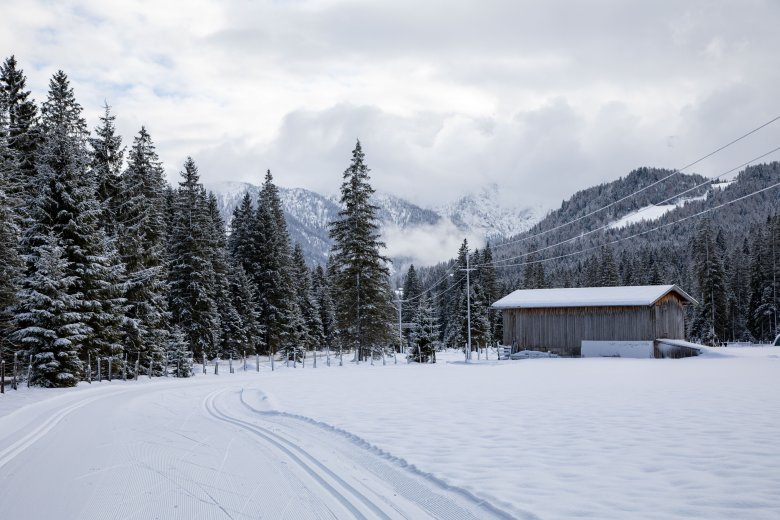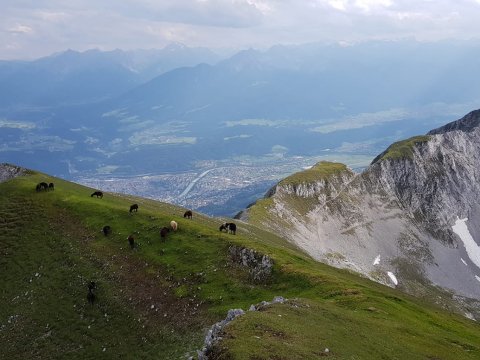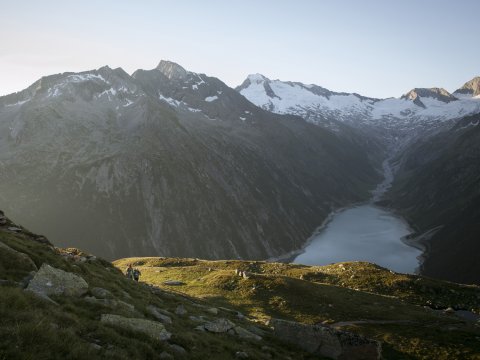Ten Places in Tirol You Simply Have to Visit in 2022
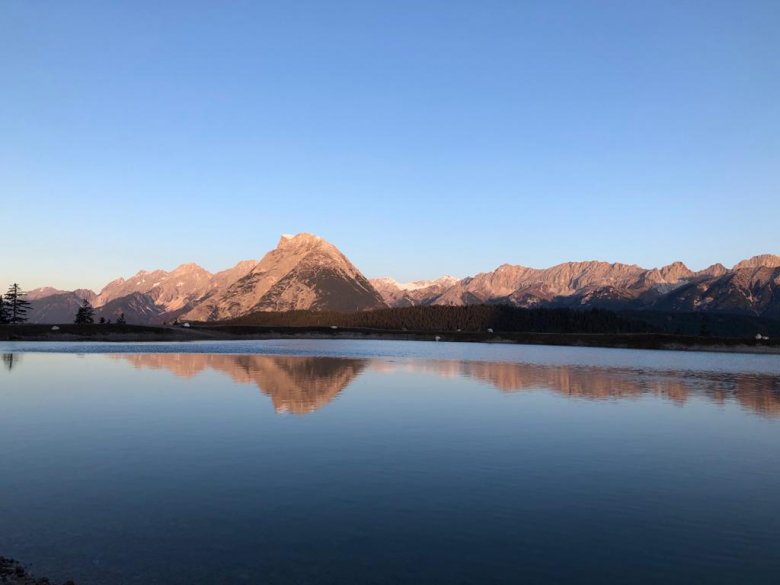
Cross-country skiing at the end of the world, fine dining at the POSCHT and a hike on the back of a sleeping giant are just three of our top ten things to do in Tirol in 2022. We sat down with the members of the Tirol Blog team to ask them about their favourite places in the region. Read on to find out more.
1. Zooming through the Zillertal Valley
Category: Cycling
Best time of year: June - October
Region: Zillertal Valley
The Zillertal Valley will be familiar to most skiers and snowboarders, but did you know that it is also one of the best spots in Tirol for road cycling? Riders can climb all the way to the Grüne-Wand-Hütte in the Stillupgrund and to the edge of the huge dam in the Zillergrund (the side valleys in this valley are known as "Gründe": Stillupgrund, Zillergrund, etc.). These two are among the best roadbike rides in Tirol, while there are plenty of other great spots to explore such as the Schlegeisspeicher glacier, the village of Hintertux, the Gerlospass mountain pass, the village of Hochfügen and the climb to the Kerschbaumer Sattel.
Experienced riders keen to test themselves can take on the Zillertal High Road, a narrow strip of tarmac winding its way through the mountains – super-tough, but with truly amazing views. Those who prefer to take it a little easier can cruise the small side roads in the valley from village to village, stopping off for example at the Gasthof Linde in Stumm for lunch. Riders intending to spend several days in the valley will find the Explorer Hotel in Kaltenbach an excellent base camp with to its healthy and hearty breakfast, personal lockers, small bike workshop with tools and relaxing spa on the top floor. - Jannis Braun
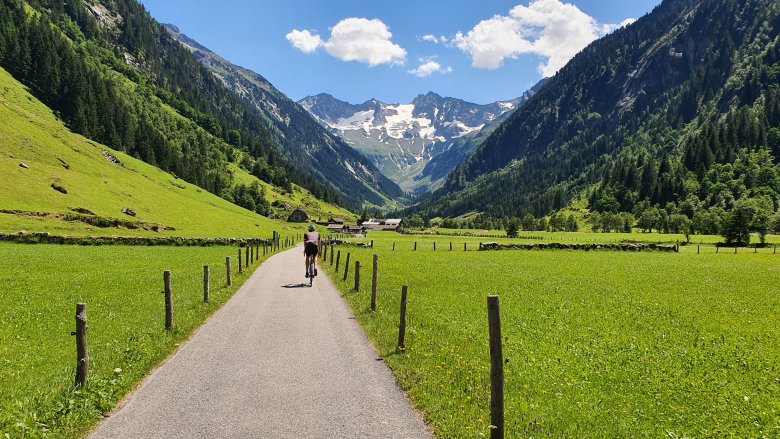
2. A Change of Perspective
Category: Action sports
Best time of year: Spring, summer
Region: Lechtal Valley
Living in the mountains has lots of upsides – not least the fact that you can get a new perspective on life and the landscape by simply heading into the high terrain. However, perspective I was less familiar with – at least until last summer – is that from the water. Over the years I have walked and cycled along Tirol's rivers, enjoying the sight and sound of the rushing water. Actually being out on the water was, however, a new one to me.
When I booked a rafting adventure last year, it was kind of a reward at the end of a hike with friends along the Lech River Trail: a bit of action, a bit of swimming, plenty of fun. Little did I know that it would open up a new perspective on a landscape that I thought I already knew inside out. Today I still remember many of the sights and sounds we experienced together on the river. An adrenaline-pumping adventure perfect for discovering things from a new perspective. Definitely a top tip for 2022. - Julia König
Fun Rafting
Clemens Friedle, Ebele 209, A-6651 Häselgehr / Tirol
Telephone: +43 5634 6304, WhatsApp: +43 677 62826828
info@fun-rafting.at
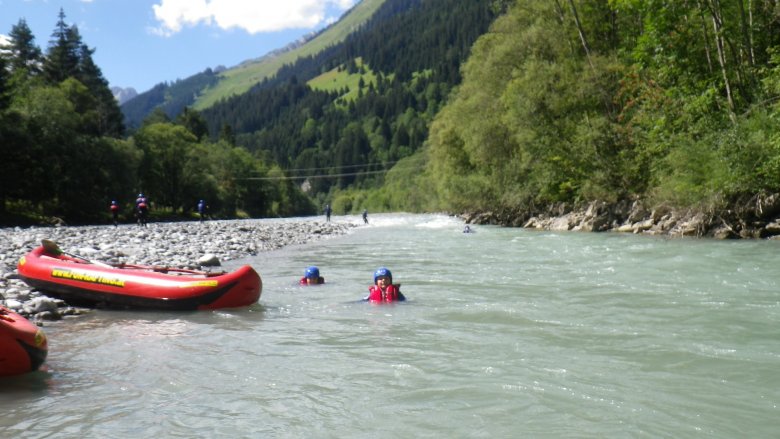
3. Hike to the Taschachhaus
Category: Hiking
Best time of year: Summer
Region: Pitztal Valley
The hike along the Fuldau High Trail up to the Taschachhaus in the Pitztal Valley isn't exactly what you would call a well-kept secret, but for some reason it took me until autumn 2021 to discover this jewel in the far west of Tirol.
Don't be intimidated by the expression "High Trail" – the section up to the hut is easy to walk and offers wonderful views of many mighty mountains over 3,000 metres, including the highest mountain in Tirol, the Wildspitze. Hikers will be also be able to see the lower reaches of the glacier and the amphitheatre-like end-of-valley area crowned by the Taschachhaus. Plan a little extra time to stop and enjoy the landscape on the way to the hut. Our hike back then was one which I still think back to fondly today. For 2022 I am planning a two-day stay in the Pitztal Valley (hopefully in Mandarfen) during which I would like to either climb to the Rüsselsheimer Hütte and the Kaunergrathütte huts or maybe complete the crossing from the Pitztal Valley to the Gepatschhaus refuge. And, if I'm honest, I'll probably also head back once again to the Taschachhaus. - Eckard Speckbacher
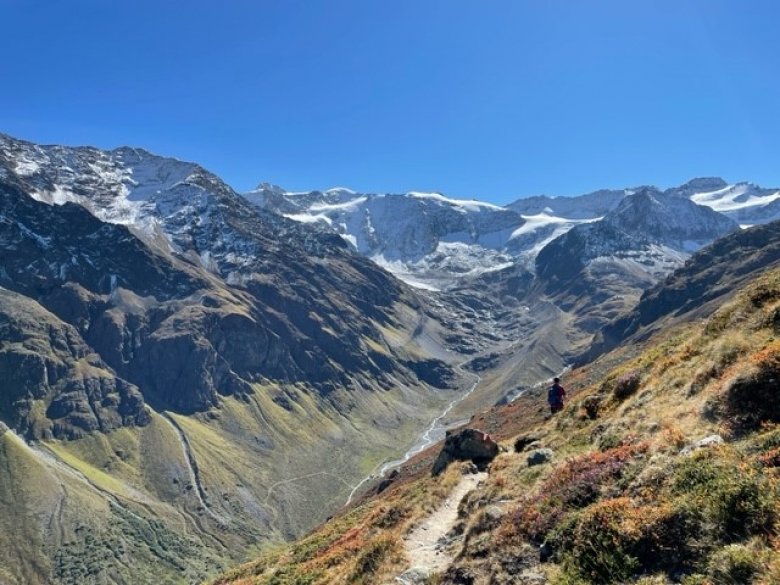
4. Tobogganing at the Faulbaumgartenalm in Alpbach
Category: Winter sport
Best time of year: Winter
Region: Alpbachtal Valley
Tobogganing is a great activity in winter – be it with the kids, with a group of close friends or with all the family including grandma and grandpa. Few winter sports combine fun and exercise out in the fresh mountain air quite as well as tobogganing. Of course, no good tobogganing adventure would be complete without stopping off at a hut to warm up. One of my personal favourites is the Faulbaumgartenalm in Inneralpbach – a traditional hut in the mountains with a cosy atmosphere and hearty local food. Leaving from the Hochberg car park, follow the "Luegergraben" gently uphill. The first section leads through a sparse forest before opening up to reveal fabulous views of the Kitzbühel Alps. The toboggan run itself is snowsure and leads through wonderfully untouched landscape. After 75 to 90 minutes of uphill walking you will see the Faulbaumgartenalm – time for a bowl of soup and a steaming mug of mulled wine or punch.
Outside you will see lots of skis planted in the snow – the hut is known as a good starting point for ski tours to the surrounding peaks. While the ski tourers chat about where to find the best powder snow, we are busy talking tactics. Which line is fastest through the corners? Where are the best spots for overtaking? After all, when it comes to tobogganing nobody can resist a race... - Martina Nairz
- Pay-and-display car park (€2.00)
- No toboggan hire at the hut
- This route is also suitable for winter walks
- 365 vertical metres from bottom to top
- Walking time: 75-90 minutes
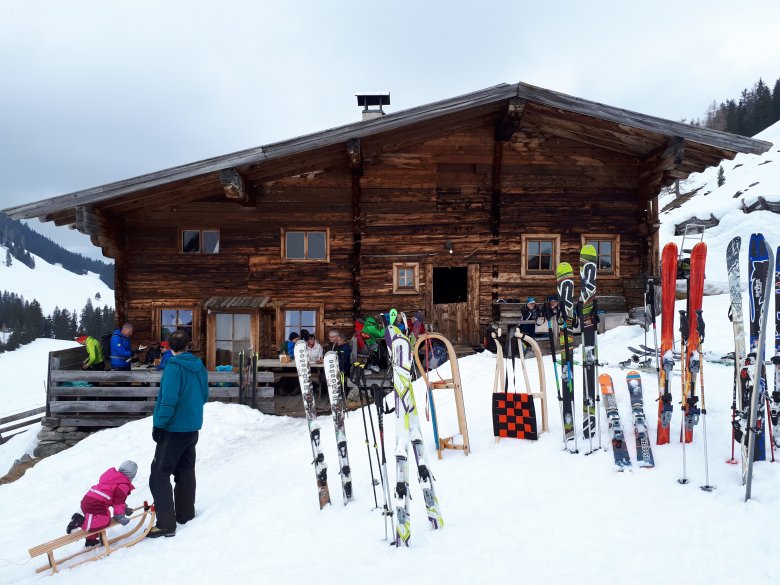
5. Fine dining at the POSCHT
Category: Food & drink
Best time of year: All year
Region: Silz
With its eye-catching modernist design, die POSCHT in Silz is a feast for the eyes as well as the stomach.
It is located in a building dating back to the 18th century, when Ferdinand Quirin Hirn and his wife Anna Maria Winkler (both born in 1775) set up an inn on this site known as the "Gasthaus zum Steinbock".
Its name was later changed to "Gasthof Post", reflecting the fact that it was used by the postal service as a kind of logistics hub until the construction of the Arlberg railway line. In 1901 the owner at the time, Wolfang Hirn, commissioned a large sign to be painted on the outside of the building with the words "Gasthof Post".
Fast forward 120 years and today you will find Anne-Marie and Christian Tramberger in charge of things at the renamed "POSCHT". Both are from Silz and spent many years running the successful "Silzerhof" in Kühtai before selling up and heading back home. Head chef Christian Tramberger has won several awards and strives wherever possible to source ingredients from local farmers and producers. The "POSCHT" offers excellent food in a relaxing and welcoming atmosphere – a must for your 2022 fine food to-do list. - Anna Lang
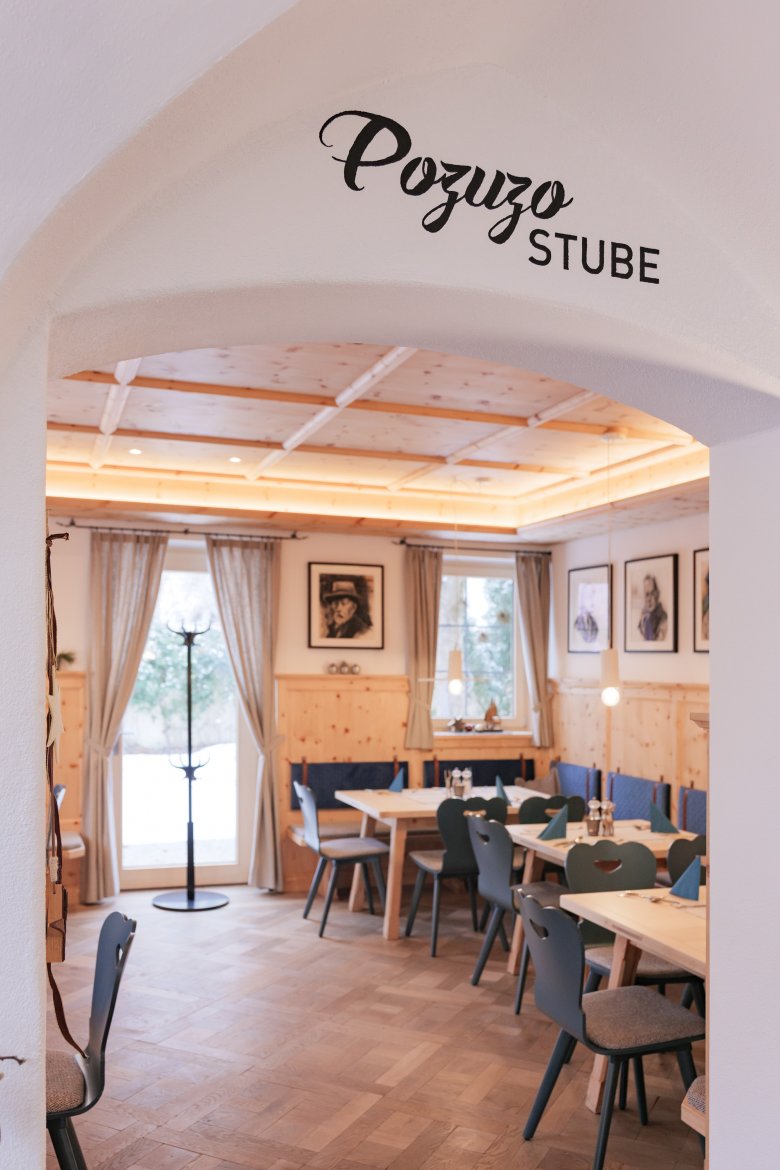
6. Climbing the back of a sleeping giant
Category: Hiking
Best time of year: Autumn
Region: Telfs
"The sleeping giant" is the nickname given by locals to the Hohe Munde, an iconic mountain above the town of Telfs whose silhouette appears to depict, you've guessed it, a sleeping giant. I see it every day as I look out of my window, bathed in golden light by the first rays of the sun. Every year I climb the Hohe Munde, drawn back again and again to its summit by some kind of magical force.
This year was no different. On a beautiful autumn day in late October with the sun set against a clear blue sky I hiked to the western summit, which is 70 metres higher than its eastern brother. At the top, as always, we tucked into the food we had brought with us as alpine choughs circled above in the hope of picking up a few leftovers. The views were just as fabulous as the first time all those years ago.
Indeed, so spectacular was the scenery that day it took us longer than usual to get to the top – quite simply because we found ourselves stopping again and again and again to take photos and admire the landscape. Up at the top we could see all the way to the Kellerjoch mountain near Schwaz – a good 40 kilometres as the crow flies. Some members of the group insisted they could even see the Großvenediger, one of Austria's highest mountains, on the border between Tirol and Salzburg. In the end we couldn't agree – and while we were busy debating the issue, a few alpine choughs managed to dive down and snap up the breadcrumbs we had left behind. - Julia Scheiring
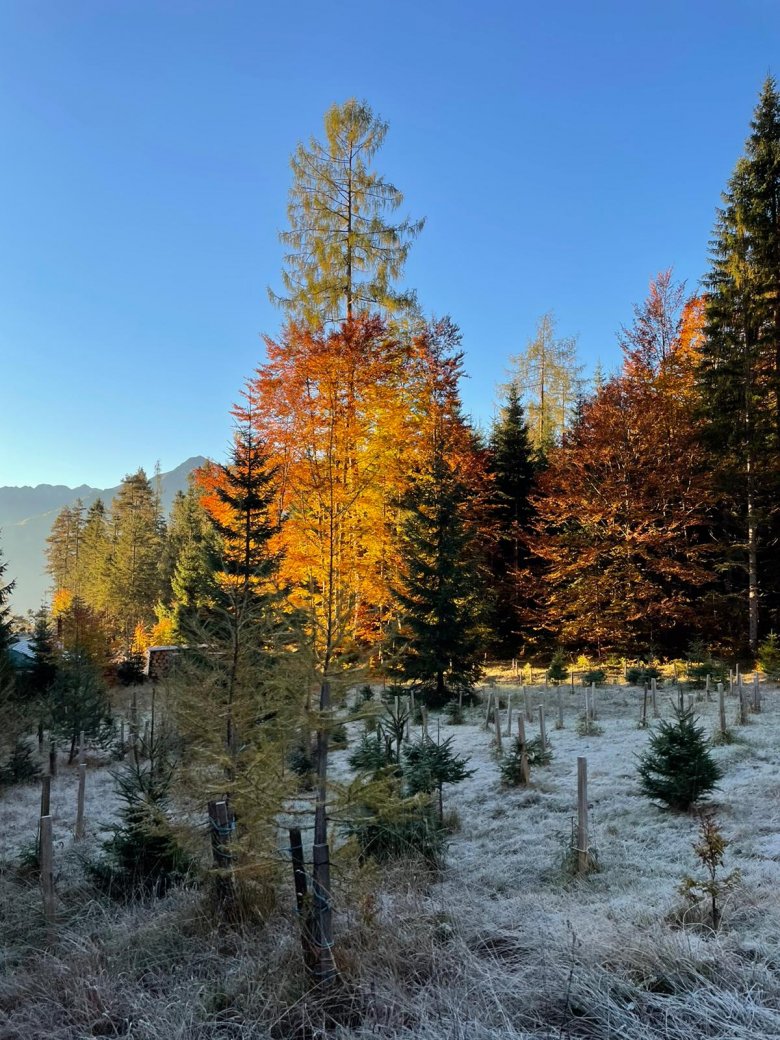
7. Autumn colours at the Kleiner Ahornboden
Category: Cycling
Best time of year: Autumn
Region: Karwendel Mountains
Every year I do a mountain bike ride through the Karwendel Mountains – and every year I can't resist a stop at the Kleiner Ahornboden. The smaller brother of the famous Großer Ahornboden may not have as many trees, but for me it has a very special atmosphere. It can only be reached on foot or by bike, meaning it is less busy than the Großer Ahornboden. Some of the mighty chestnut trees here are over 100 years old, nestling in the heart of the Karwendel Nature Park between mighty mountains and lush meadows. A magical place that draws me back again and again. - Michael Walzer
8. Winter walking with four-legged friends
Category: Walking
Best time of year: Winter
Region: Seefeld
"Walking in a Winter Wonderland" is probably the best way to describe a day hiking through the snowy landscape in Seefeld. Gently rolling hills, frozen lakes and plenty of snow all season at over 1,000 metres above sea level make for a wonderful experience. All you need is warm clothing and a pair of sturdy hiking boots. Dog owners will be pleased to know that the trails are also open to their four-legged friends.
One of my favourite routes is the winter walk along the Friedensweg trail, which begins near the Seewaldalm hut in Mösern. Walkers and dogs then head towards the Möserer See lake, a good place for a lunch of hot soup and tea. Dogs are also welcome. My dog, Gatsby, was lucky enough to get a little treat from the owner of the hut. With out batteries recharged, we head to the church in Mösern with its Peace Bell rung every day at 17:00. Since the weather was so good, we decided to walk the same route back – including another stop at the lakeside hut, the Möserer Seestube, for cake and coffee. A great day in the winter wonderland of Seefeld. - Pia Nickl
Top tips for staying warm on winter walks
- Lots of layers (thermal underwear, fleece jumper, hardshell or softshell jacket)
- Warm and waterproof footwear with a thick sole and insulating insoles
- Snowshoes and jacket for dogs (if necessary)
- Rucksack with thermos flask, suncream, powerbank, energy-rich food, dog food, dog-poo bags
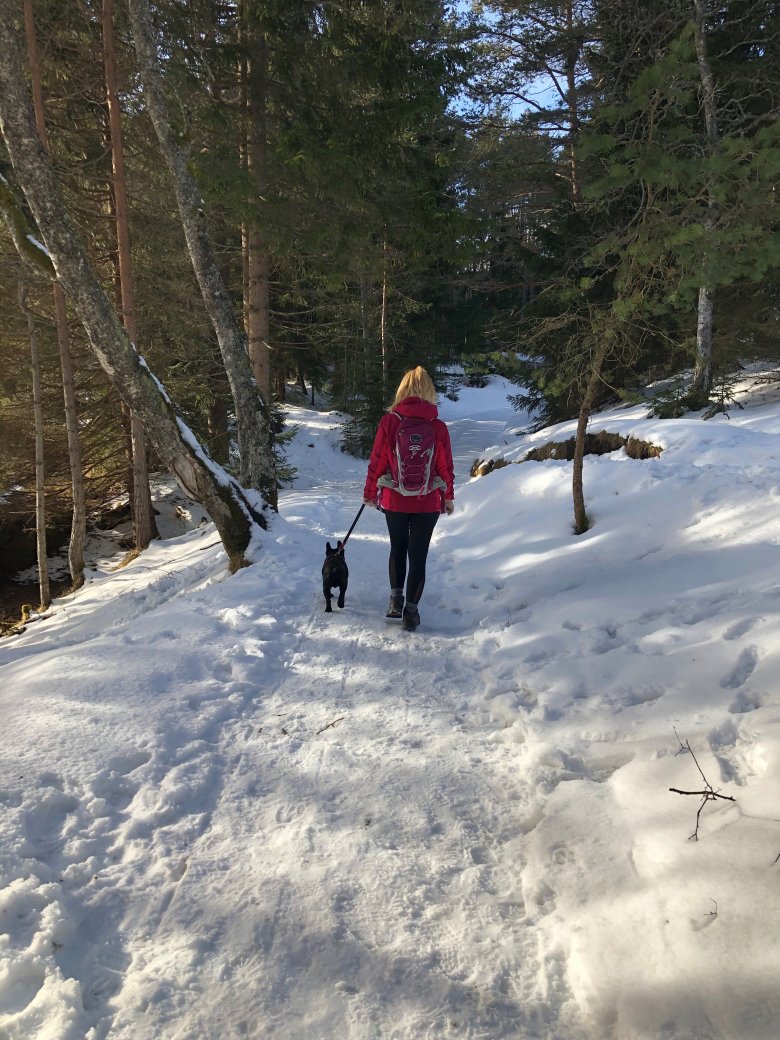
9. Power of nature at the Rosengartenschlucht canyon in Imst
Category: Hiking
Best time of year: May - October
Region: Imst
We all know that feeling of pulling back the curtains only for the weather outside to be less dazzling and more dreary than we had hoped. This was exactly the experience my boyfriend and I had in May of this year, when the landscape was covered by a thick layer of low-lying cloud and the sun was nowhere to be seen.
Originally we had wanted to go for a hike in the mountains, but even the most hardcore hiking enthusiasts would have been put off by conditions outside. After a quick think we decided to change our plans and instead go to the Rosengartenschlucht, a large canyon in Imst. Our adventure began at the Johanneskirche church in the town centre. After a short walk along the banks of the Schinderbach river we reach the entrance to the gorge flanked on both sides by towering walks of rock. The route through this incredible natural phenomenon is a mixture of wooden walkways, rock paths blasted into the stone and sandy trails. We head up, up, up, past all manner of moss and fern species. The water churns away beneath our feet, carving its way through the rock. And then, just as we reach the top, the sun finally puts in an appearance. Bliss!
After around 90 minutes of walking at a gentle pace we finally get to the end of the Rosengartenschlucht and with it the main highlight – the Blue Grotto. This almost surreal body of turquoise water was created over 2,000 years ago when the Romans mined the rock in the area in search of galena from which they could extract silver. Having marvelled at the Blue Grotto, we head from Hoch-Imst back down past the Wetterkreuz mountain all the way to our starting point in Imst. Next time we will try the Alpine Coaster, a single-seat summer rollercoaster suitable for all ages. Back at the church in the centre of Imst we turn around one last time to look back at where we have been – an oasis of calm just a few metres from the hustle and bustle of Imst. - Verena Eichinger
Good to know! The Rosengartenschlucht canyon is open from May until October. Admission is free of charge.
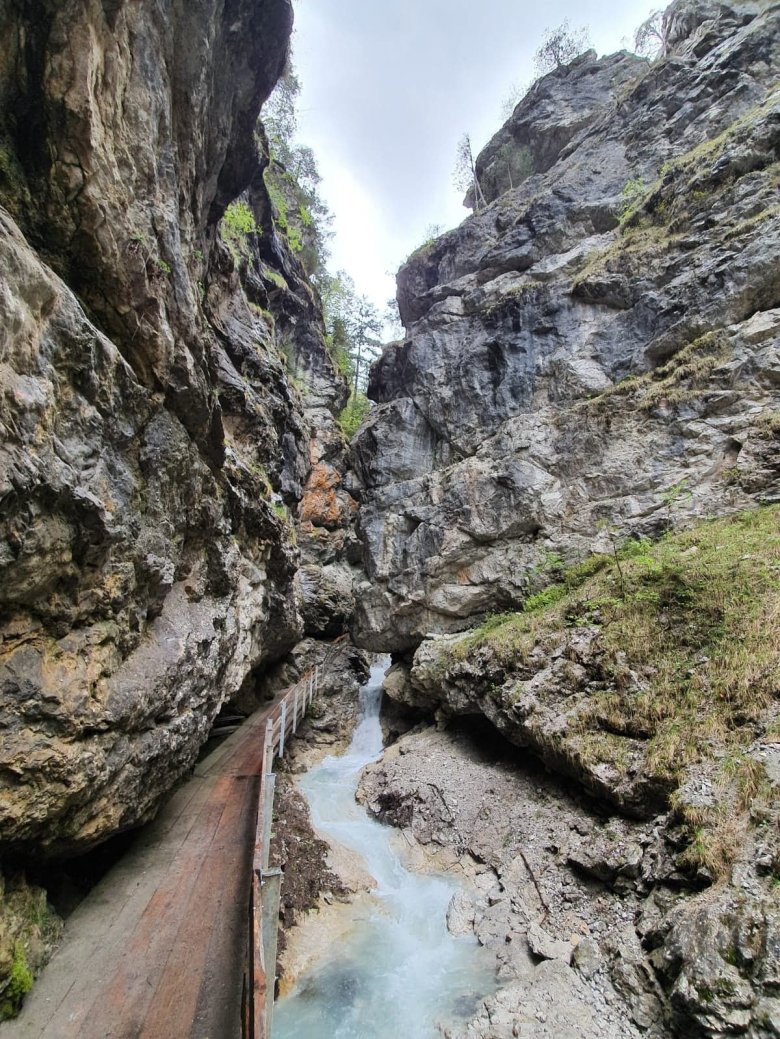
10. Cross-country skiing at the end of the world
Category: Winter sport
Best time of year: Winter
Region: Steinberg
Steinberg am Rofan is one of the most remote spots in Tirol, but don't let that put you off. After all, it's no coincidence that the locals call this place "the most beautiful end of the world".
Far from shopping centres and motorway junctions, nestling between the Rofan Mountains and the Brandenberg Alps, lies the village of Steinberg am Rofan at around 1,000 metres above sea level. There is plenty of snow here all winter, so it's only logical that cross-country skiing is one of the most popular activities among locals and visitors alike. I was lucky enough to grow up here just a stone's throw from the cross-country skiing trails, which are kept in top condition throughout the season. There is something for everyone, from easy cruising to challenging climbs. The trails cater to both the traditional Classic cross-country skiing technique and the more modern and dynamic Skating technique.
Skiers cruise through forests, past wooden huts all the way into the centre of the village. Don't forget to stop for a meal at the Waldhäusl, for coffee and cake at the Dorfhaus or for an isotonic drink at the Silberwaldhütte. All these huts and many more are located right next to the trails. - Max Margreiter
Tip! If you can drag yourself out of bed, we recommend heading out onto the trails early in the morning shortly after sunrise. It is a magical experience to see the first rays of sun slowly stretch out across the landscape, catching the ice crystals in the snow. Cross-country skiing is excellent for all those who are in search of peace and quiet instead of action and adrenaline. Keep your eye out for some local wildlife, including foxes, hares and deer, especially in the early hours of the morning and shortly before sunset. Next to the trails you will also find an alpaca farm run by one of the local farmers. If they're in a good mood they may even let you stroke them.
